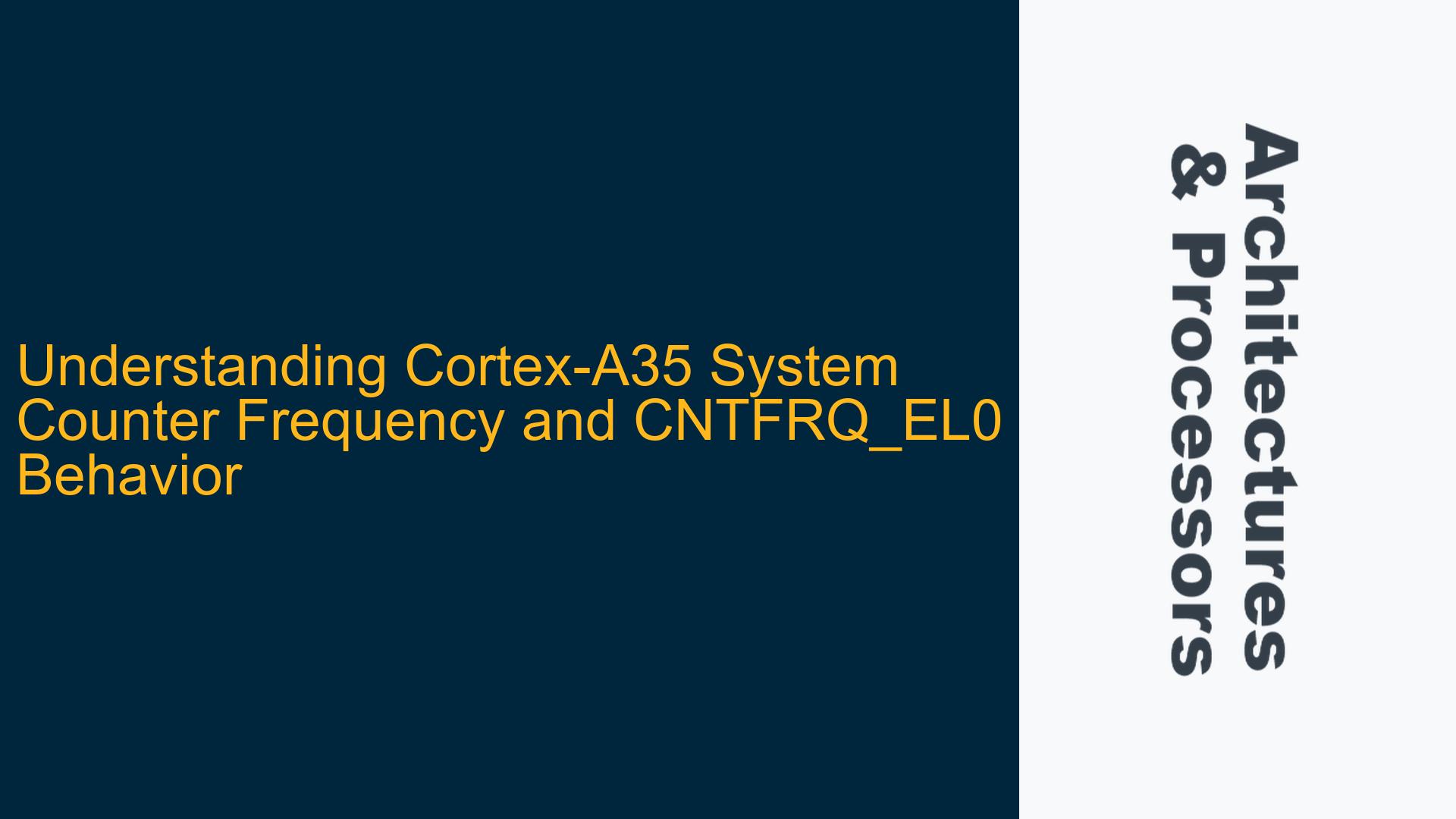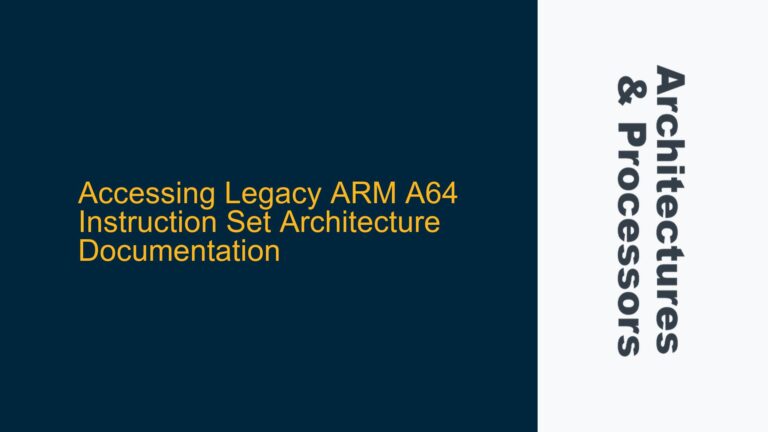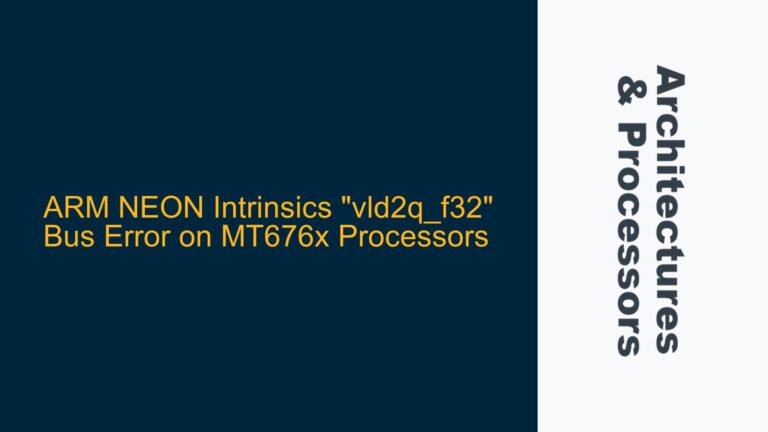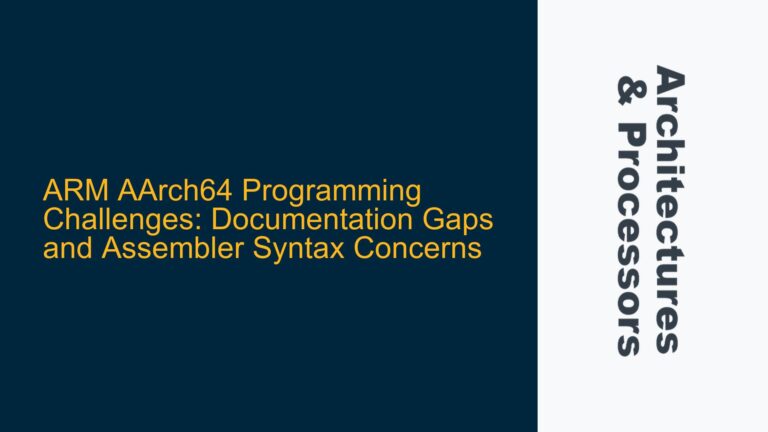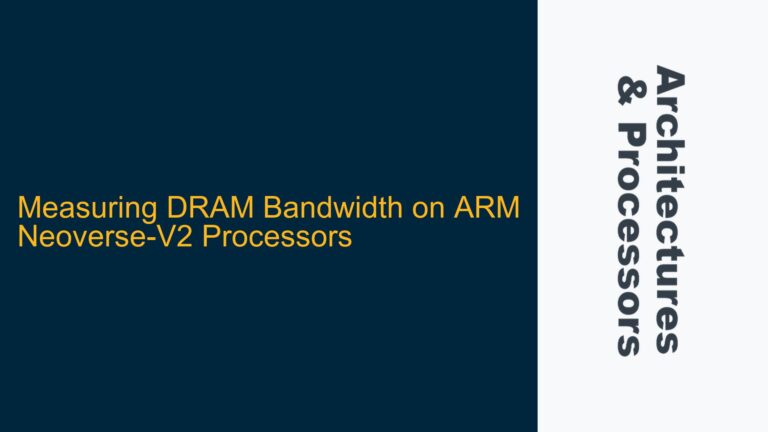Cortex-A35 System Counter Frequency: 8 MHz CNTFRQ_EL0 Reading Explained
The Cortex-A35 processor, a member of the ARMv8-A architecture family, is designed for high efficiency and low power consumption, making it suitable for embedded and mobile applications. One of the key components of the ARMv8-A architecture is the system counter, which provides a consistent timebase for the system. The system counter frequency is programmable via the CNTFRQ_EL0 register, and its value is critical for timekeeping, synchronization, and performance monitoring. However, a common point of confusion arises when developers observe that the CNTFRQ_EL0 register reads a frequency of 8 MHz on a Cortex-A35-based system, such as the i.MX8QXP, despite the processor running at GHz frequencies. This discrepancy is not an error but rather a deliberate design choice rooted in the architecture’s specifications and use cases.
The system counter is a global counter that increments at a fixed frequency, independent of the processor’s clock speed. This design ensures that the counter provides a consistent timebase across different cores, clusters, and even devices in a distributed system. The frequency of the system counter is typically much lower than the processor’s clock frequency, as it is optimized for power efficiency and simplicity rather than high-resolution timing. The ARM Architecture Reference Manual (ARMv8-A) specifies that the system counter frequency typically falls within the range of 1 MHz to 50 MHz, with 8 MHz being a common value.
The Cortex-A35 Technical Reference Manual (TRM) further clarifies that the system counter operates at a slower frequency than the processor clock. This separation allows the system counter to remain active even when the processor cores are in low-power states, ensuring that timekeeping and synchronization functions continue to operate correctly. The CNTFRQ_EL0 register, which holds the system counter frequency, is programmed by the firmware or bootloader during system initialization. The value of 8 MHz is often chosen as a balance between resolution and power consumption, as higher frequencies would increase power usage without providing significant benefits for most use cases.
In summary, the 8 MHz reading from the CNTFRQ_EL0 register is normal and expected behavior for a Cortex-A35-based system. The system counter frequency is intentionally set lower than the processor clock frequency to optimize power efficiency and ensure consistent timekeeping across the system. Developers should be aware of this distinction and understand that the system counter frequency is not indicative of the processor’s performance or clock speed.
Misalignment Between System Counter Frequency and Processor Clock Speed
The apparent mismatch between the system counter frequency (8 MHz) and the processor clock speed (GHz range) can lead to confusion, especially for developers who are new to ARM architectures or embedded systems. This misalignment is not a bug or oversight but rather a deliberate design choice that reflects the different roles and requirements of the system counter and the processor clock.
The processor clock, which operates in the GHz range, drives the execution of instructions and the operation of the processor’s functional units. This high clock speed is necessary to achieve the performance levels required by modern applications, such as multimedia processing, gaming, and machine learning. However, the processor clock is not suitable for use as a global timebase because it can vary dynamically due to power management features like Dynamic Voltage and Frequency Scaling (DVFS). These variations would introduce inconsistencies in timekeeping and synchronization if the processor clock were used directly.
In contrast, the system counter operates at a fixed frequency, typically in the range of 1 MHz to 50 MHz, as specified in the ARM Architecture Reference Manual. This fixed frequency ensures that the system counter provides a stable and consistent timebase, regardless of the processor’s current clock speed or power state. The system counter is also designed to remain active even when the processor cores are in low-power states, ensuring that timekeeping and synchronization functions continue to operate correctly.
The CNTFRQ_EL0 register, which holds the system counter frequency, is programmed by the firmware or bootloader during system initialization. The value of 8 MHz is often chosen as a balance between resolution and power consumption. Higher frequencies would provide finer resolution for timekeeping but would also increase power consumption, which is undesirable in power-constrained environments. Lower frequencies would reduce power consumption but would also reduce the resolution of the system counter, making it less suitable for high-precision timing applications.
In summary, the misalignment between the system counter frequency and the processor clock speed is a deliberate design choice that reflects the different roles and requirements of these two components. The system counter provides a stable and consistent timebase for the system, while the processor clock drives the execution of instructions and the operation of the processor’s functional units. Developers should be aware of this distinction and understand that the system counter frequency is not indicative of the processor’s performance or clock speed.
Validating and Configuring CNTFRQ_EL0 for Optimal System Performance
To ensure optimal system performance and correct operation of timekeeping and synchronization functions, developers must validate and configure the CNTFRQ_EL0 register correctly. This process involves understanding the system counter’s role, verifying the programmed frequency, and ensuring that the system counter is used appropriately in the application.
The first step in validating the CNTFRQ_EL0 register is to confirm that the programmed frequency is within the expected range. As specified in the ARM Architecture Reference Manual, the system counter frequency typically falls within the range of 1 MHz to 50 MHz. A reading of 8 MHz, as observed in the Cortex-A35-based i.MX8QXP system, is well within this range and is a common value for many ARM-based systems. Developers should consult the system’s documentation or contact the manufacturer if they encounter a frequency outside this range, as it may indicate a configuration error or hardware issue.
Once the programmed frequency has been validated, developers should ensure that the system counter is used appropriately in the application. The system counter is typically used for timekeeping, synchronization, and performance monitoring. For example, the system counter can be used to measure the elapsed time between two events, synchronize the activities of different cores or devices, or monitor the performance of the system. Developers should be aware that the system counter provides a lower-resolution timebase than the processor clock and should use it accordingly.
In some cases, developers may need to adjust the system counter frequency to meet the requirements of their application. This adjustment can be made by reprogramming the CNTFRQ_EL0 register during system initialization. However, developers should exercise caution when changing the system counter frequency, as it can affect the operation of timekeeping and synchronization functions throughout the system. Any changes to the system counter frequency should be thoroughly tested to ensure that they do not introduce inconsistencies or errors.
In summary, validating and configuring the CNTFRQ_EL0 register is a critical step in ensuring optimal system performance and correct operation of timekeeping and synchronization functions. Developers should confirm that the programmed frequency is within the expected range, use the system counter appropriately in their application, and exercise caution when making changes to the system counter frequency. By following these steps, developers can ensure that their Cortex-A35-based system operates correctly and efficiently.
